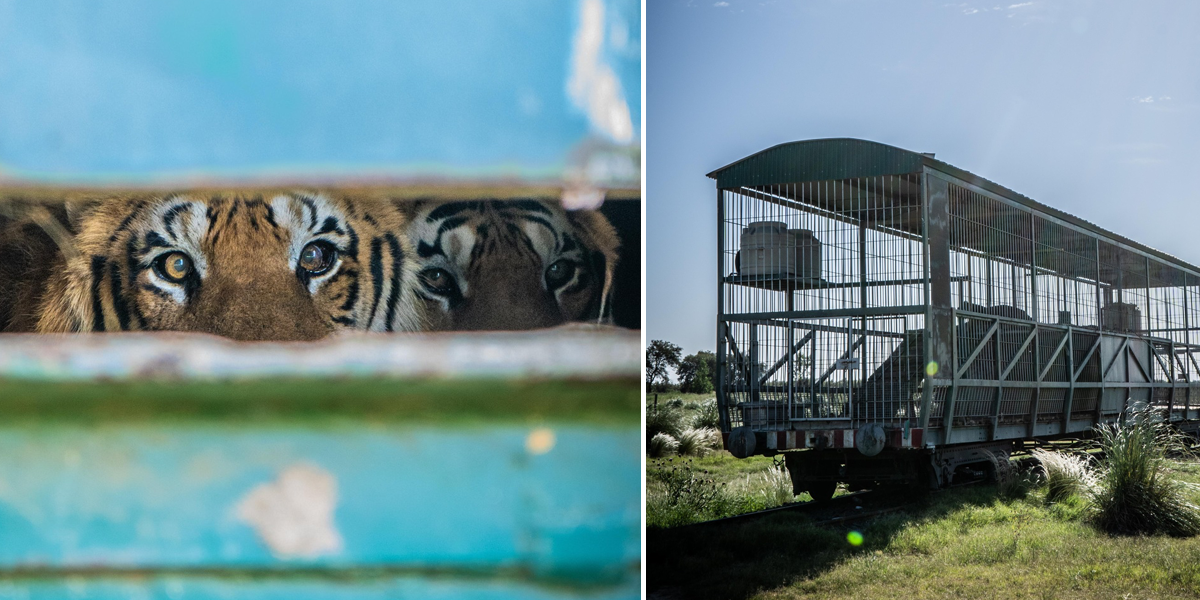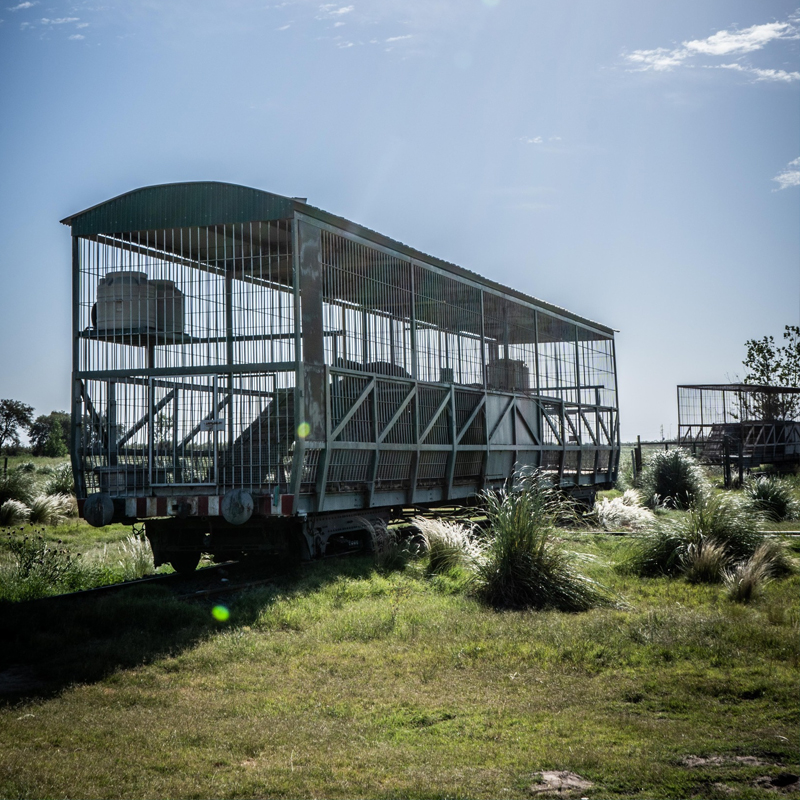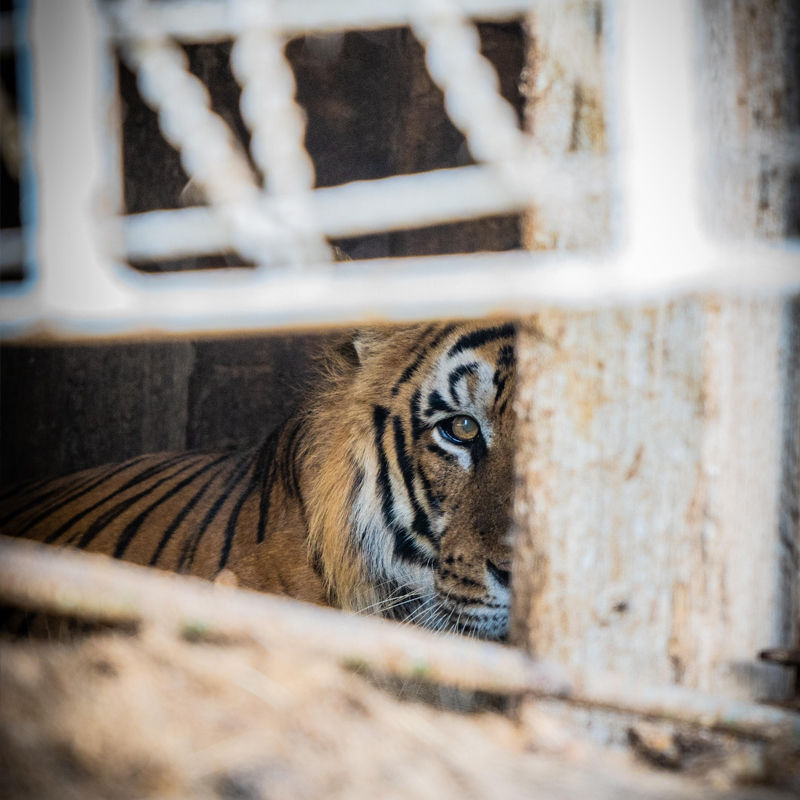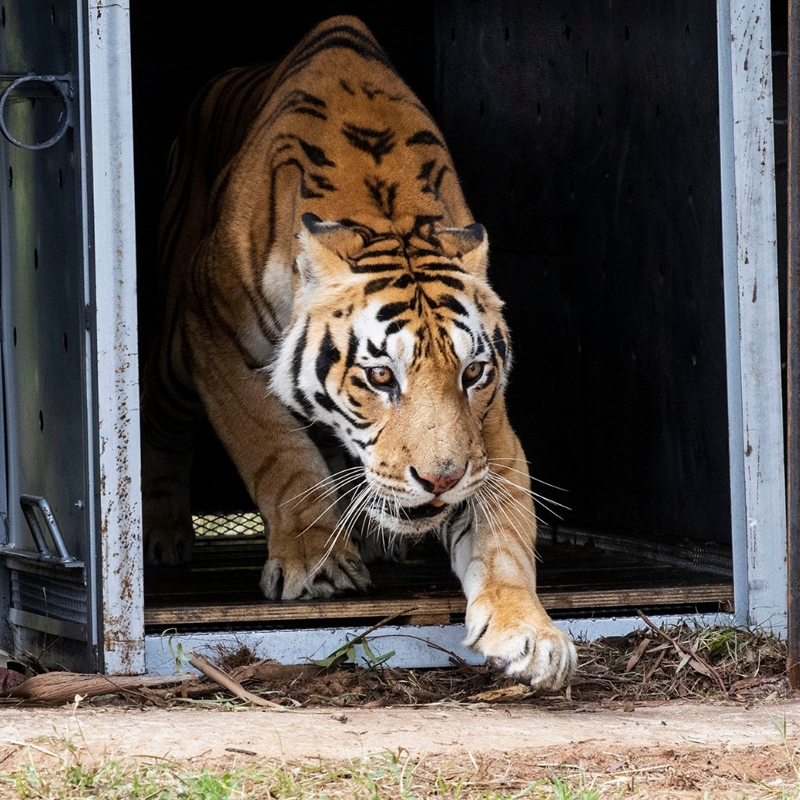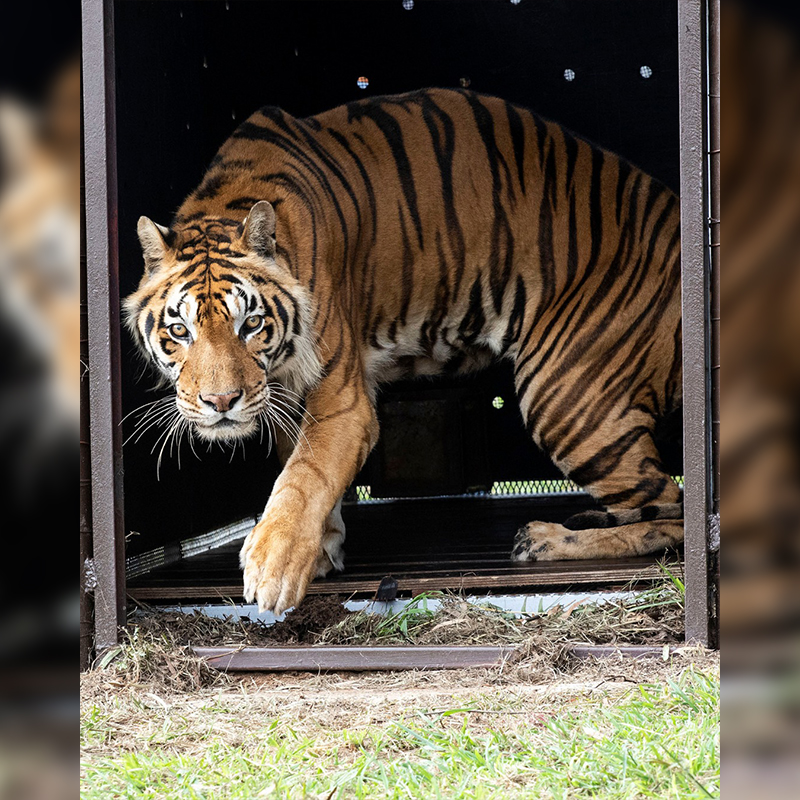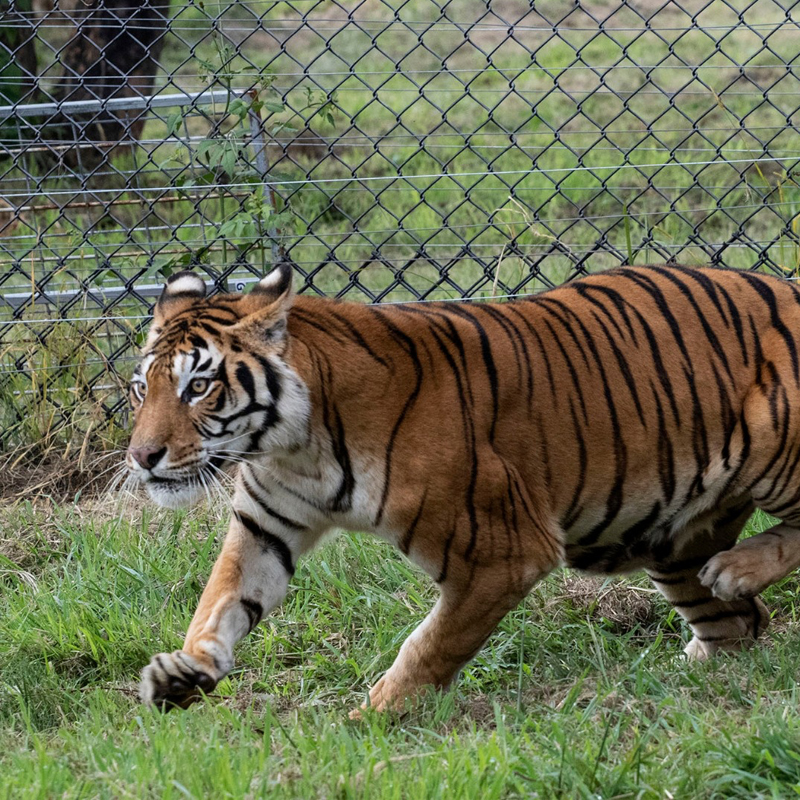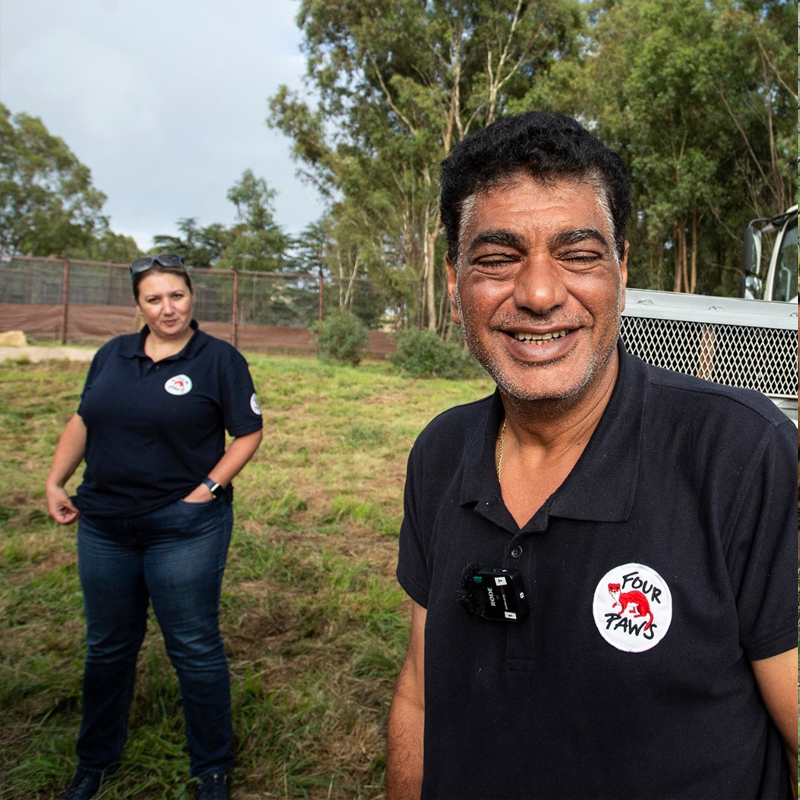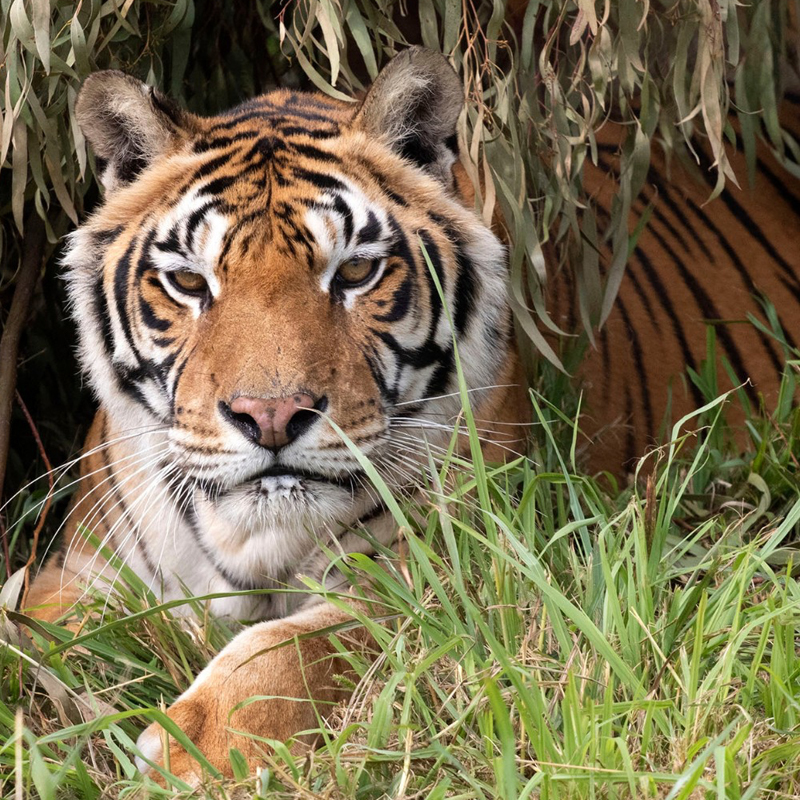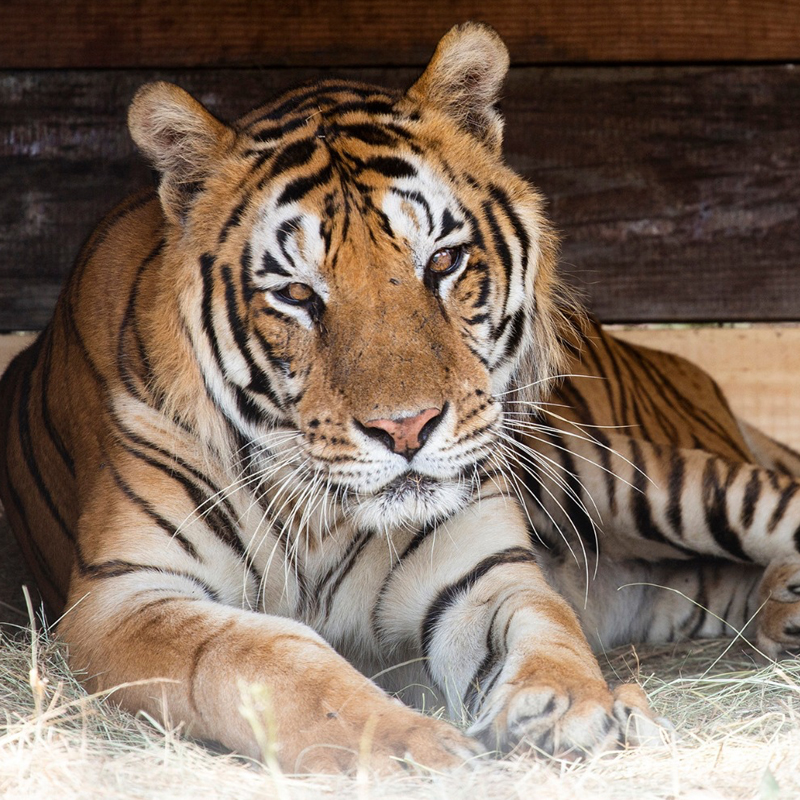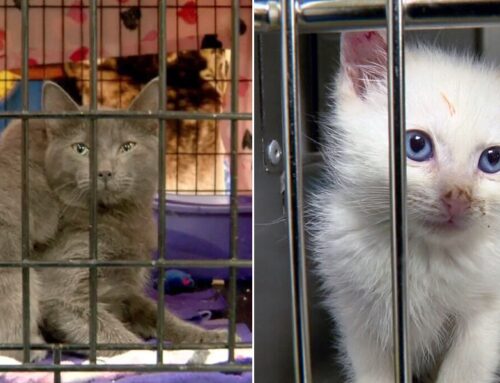Bengal tigers are one of the world’s most beautiful big cats. But if there’s one thing that’s important for all tigers, it’s space. Lots of it. There are six living subspecies of tigers (there once were nine subspecies of these amazing cats but sadly, three are extinct.) They range over a territory of as little as 20 km (just over 12 miles), to as much as 400 km (258 miles).
That’s what makes this story so upsetting initially.
But fortunately, there’s a happy ending.
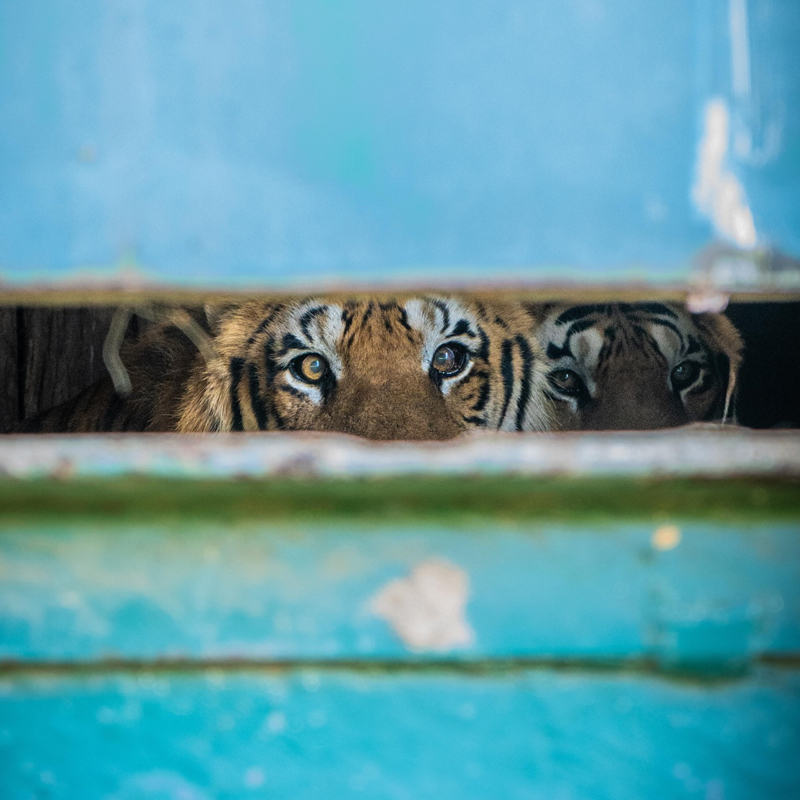
Images via Facebook/Four Paws
Sandro, Mafalda, Messi, and Gustavo are four Bengal tigers who were forced to spend their lives in a train carriage in the San Luis Province of Argentina, according to the animal rights group Four Paws.
Imagine spending 5,000 days looking out on a green meadow you have no access to. Staring out the bars of your cage and not being able to feel the grass beneath your feet. That was the fate of these beautiful tigers. For 15 dreadful years.
“The cages are barely larger than the size of two parking spaces and are part of an old train carriage — unfit for any animal,” the group wrote in a statement. “In the beginning, it was only two of them. Then two cubs were born, who are 10 years old today. Trapped behind bars in dirty conditions, with little space to move on a train wagon — which has been stood still since then.”
I can’t help but think this must have been horribly frustrating for these cats who are happiest when they have plenty of room to roam.
Rescuing The Tigers
It was no small effort for Four Paws to rescue these big predators and relocate them to the LIONSROCK Big Cat Sanctuary (established by Four Paws) near the town of Bethlehem, South Africa, Newsweek reports.
Four Paws was able to rescue the big cats after weeks of “tireless efforts and close cooperation with the Argentinian and South African authorities.”
“Getting the tigers out of the train carriage, into the transport crates and on a truck to the airport was a logistical challenge the experienced team mastered without complications,” the group noted. “Now Sandro, Mafalda, Messi, and Gustavo have arrived well at their new forever home after a journey of over 70 hours.”
The organization also notes this was their first rescue mission in South America and says that over the past few weeks a team of veterinarians and wildlife experts have been readying the tigers for the trip. As a result, they arrived in good shape. Now the team will work to “make sure they can relax and adjust to the new settings.”
Video by Four Paws:
Freedom For The Tigers
“These tigers have never felt grass or earth under their paws,” said Four Paws veterinarian Amir Khalil, who led the mission and supervised the transfer of the big cats from Argentina to South Africa.
This is the first chance these beautiful cats have ever had to see the sky, not just the ugly bars of their cages and a roof. Now, Khalil said, they have hundreds of miles of landscape.
“It is overwhelming for them to be in a completely new environment, but animals are quick at adapting to better living conditions,” he said.
And indeed, there are a few big steps ahead for these magnificent cats.
Hildegard Pirker, who heads the LIONSROCK Big Cat Sanctuary adds:
“The road to rehabilitation for these animals now begins. In the coming days and weeks LIONSROCK will closely monitor the four tigers medical needs and determine the veterinary care they need.”
These tigers have suffered due to human selfishness. Trapping them in such cruel conditions for so long is just unimaginably cruel. How wonderful that they are now in a much better place. Something they always deserved.
LIONSROCK is currently home to more than 100 rescued big cats. Some have come from “war-ravaged zoos, circuses, private ownership, and the canned hunting industry.”
Bengal Tigers Are In Real Trouble.
LiveScience reports that tiger populations have plunged by 95 percent and tigers now occupy an area that’s 40 percent smaller than the area they occupied a decade ago. The Bengal tiger (Panthera tigris tigris) is the most numerous tiger subspecies and is found in India, Bangladesh, Nepal, and Bhutan. India is currently home to the largest population, with somewhere between 2,500 and 3,750 cats, according to the Save The Tiger Fund, per LiveScience.
We have lost three beautiful tiger subspecies forever. They will never come back. It’s wonderful that groups like Four Paws and others are giving these big cats better lives but if we wish to see these amazing creatures continue to survive it’s up to all of us to do better.
Wild animals should never be entertainment for humans. Especially big cats. It’s shameful that there are now more captive tigers in the U.S. than anywhere else in the world. Maybe that sounds unbelievable but here are the facts according to the WWF: There are an estimated 5000 captive tigers in the U.S. but only about 3,900 living in the wild. Many of these poor cats are privately owned, living in people’s backyards, kept as roadside attractions, or held at private breeding facilities. It’s estimated only 6 percent of tigers captive in the U.S. are housed in zoos or other facilities accredited by the Association of Zoos and Aquariums.
How sad is this? If you wish to see tigers I’m including tips from WWF India, Why not take the chance to see wild tigers, while at the same time helping to stop the wild tiger trade?
Why would you even want to see a tiger in a cage if you don’t have to?


